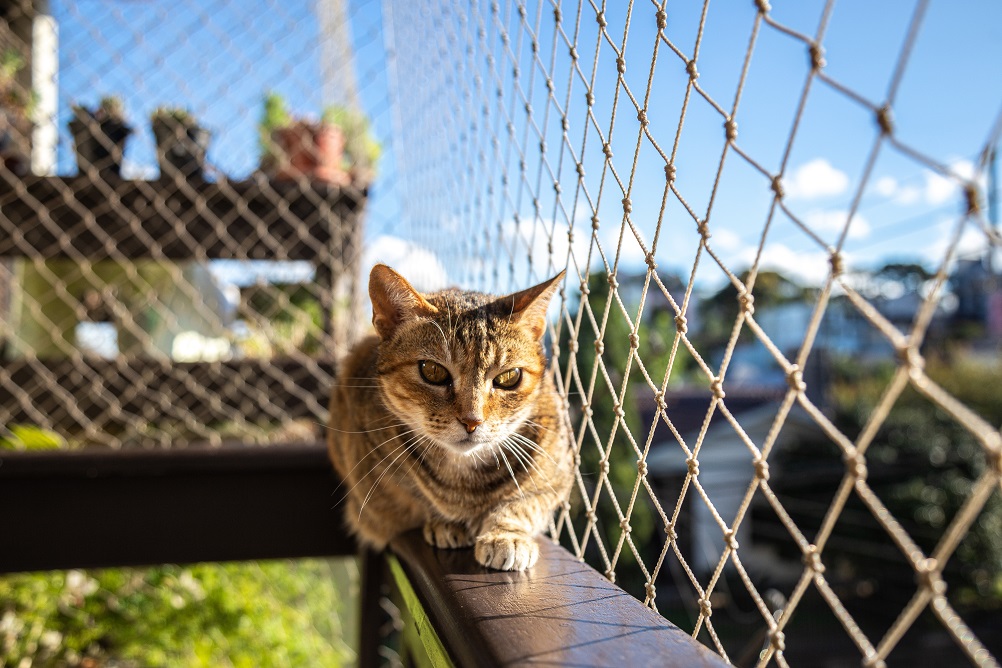
The great outdoors is never a completely safe place for your cat. So naturally, it’s a significant worry for cat owners when it comes to allowing their cats the freedom to explore outside in the lawn or garden. Thankfully, there are plenty of DIY ways to create a cat-friendly garden, complete with a cat-proof fence. That way, you can ensure a safe, enclosed space for your cat to explore without the risk of them venturing off and getting into danger.
Fencing needs to be 6 feet high with no gaps in it, to prevent your cat from getting out. Installing fence toppers can help make existing fencing catproof. Building a "catio" provides a safe and fully enclosed outdoor space for your cat.Key Takeaways
A fence is the best way to contain your cat in the garden, so let’s explore several simple ways to cat-proof a fence.
Also Read: The 5 Best Invisible Fences For Cats
1. Ensure The Fence Is The Right Height
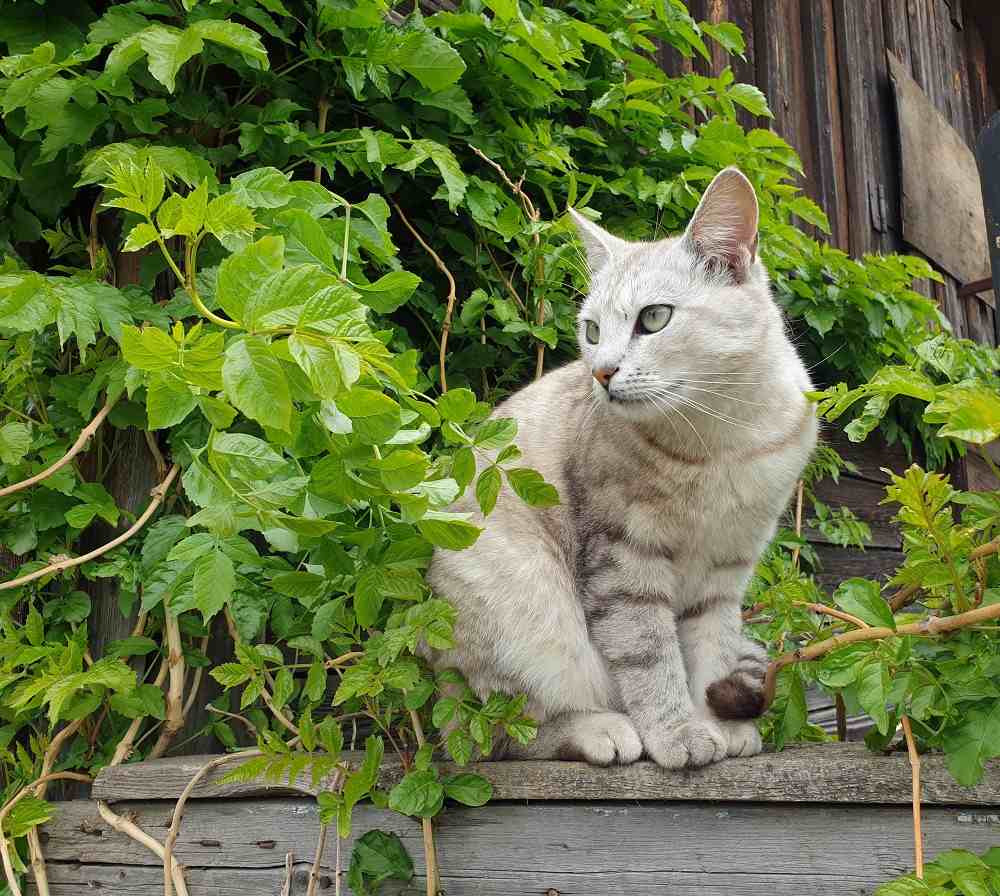
Cats are great jumpers, so an appropriately tall fence is necessary to keep your cat from jumping up and over it.
The organization iCat Care recommends a 6-foot fence to prevent your cat from escaping your garden. Posts used to fix the fence in place should be at least 7 feet 6 inches tall to ensure that the fence is secured into the ground with no gap underneath.
Remember when building new fences, especially at this height, that you’ll need to discuss your plans with your neighbors to ensure there are no objections. And always be sure to check your local planning regulations, as fences over 6 feet 6 inches in height may require planning permission from your local authority.
In some buildings and housing developments there may be other rules in place that could restrict the building of fencing around your part of the property, so always look into this first.
Also Read: How High Can A Domestic Cat Actually Jump?
2. Fill In Any Gaps
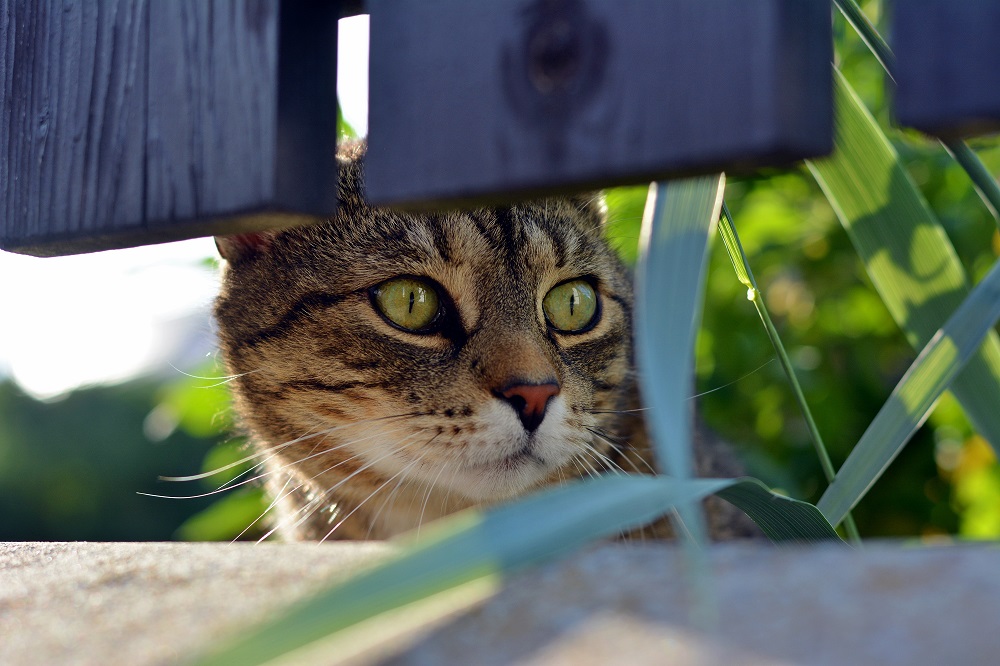
Cats can squeeze through even very small gaps if left unblocked.
Cats are agile creatures, and they can easily squeeze through even the smallest of gaps. Before letting your cat outdoors, check your cat-proof fence for any gaps that your cat might be able to squeeze through. This includes gaps at the bottom between the fence and the ground.
Repair or fill in these gaps to prevent your cat from escaping. This can be done by nailing boards onto the existing fence panels, replacing damaged panels, or adding wire or mesh fencing to fill the gap. This will also keep other animals out of your garden.
You should consider any gates or other access points to your garden too. One option is to cover the back of a gate with chicken wire or mesh fencing, as long as it’s one-inch mesh or less. Secure any gaps at the bottom of the fence near the ground. Perhaps you could raise the ground level or add wire or an extra piece of wood along the bottom of the gate to reduce the space.
Also Read: Why Are Cats So Flexible? A Vet Explains
3. Choose A Suitable Material
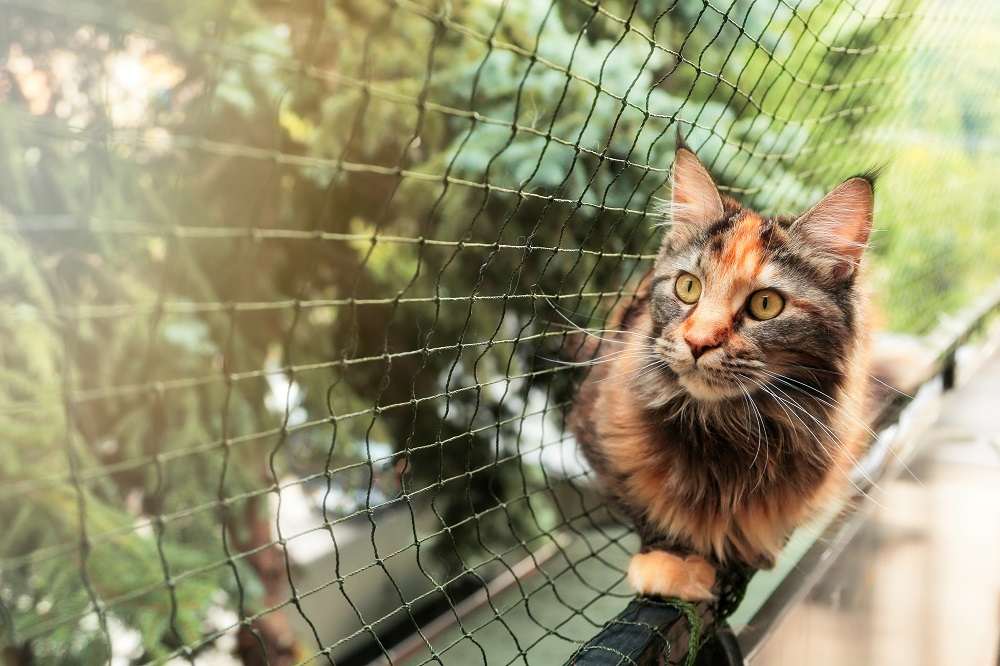
Materials like wire, netting, vinyl, and wood are all popular choices for cat-proof fences.
Choose a fencing material that’s affordable, durable, and easy to maintain. Wooden fencing is the most common, as it provides plenty of privacy and tends to last if maintained. Avoid chicken wire or mesh fencing, unless you are using it to fill the gap of a slatted fence, as mentioned above. This type of fencing on its own is very easy for your cat to grip and climb up, even if it’s 6 feet tall.
Vinyl fences are often used by cat owners because vinyl is a surface your cat can’t grip onto. Vinyl is slippery too, making it impossible for cats to climb. And finally, vinyl fencing is often available in attractive colors, making it a popular choice.
Also Read: Should I Let My Cat Outside?
4. Install A Cat-Proof Fence Topper
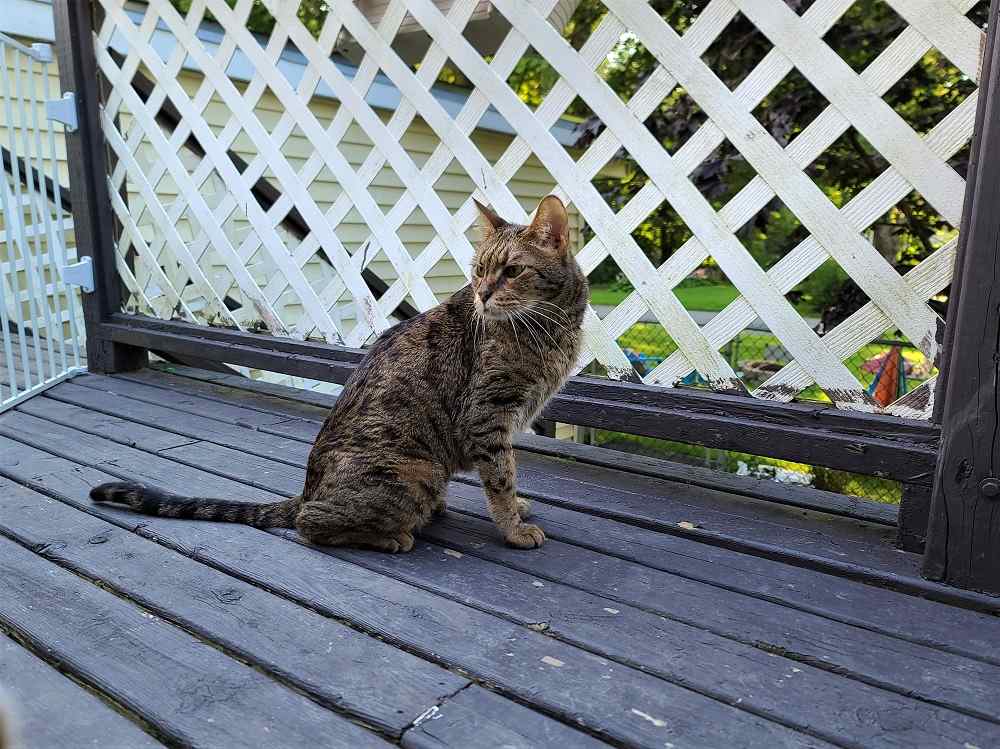
Mesh, net, and lattice fencing all need to be small enough that a cat can’t manage to squeeze through.
If you aren’t keen to replace your fencing and simply want to transform your existing fence into a cat-proof fence, then a topper may be the answer for you. Toppers can add additional height as well as deter your cat from jumping. In addition, a wire mesh barrier along the top of your fence is easy to install because it is soft and flexible.
Any mesh used will need to be no larger than 1-inch mesh. Any larger than that, a cat could fit their head through it, risking a serious injury. You can also add decorative privacy fencing to build your existing fence up to six feet and to create a more visually appealing fencing solution. Just make sure the holes in it aren’t big enough for a cat to fit through.
Also Read: How To Kitten-Proof Your Home In 12 Steps
5. Install A Cat-Proof Fence Roller
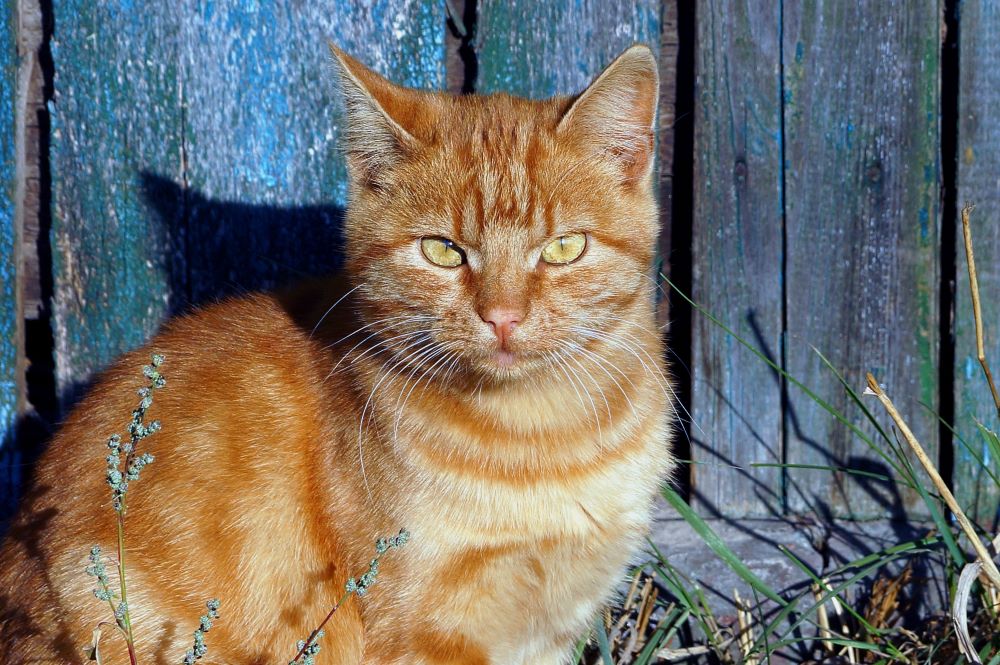
Cats may try to climb a fence, but with the right material and build, when they learn they cannot climb it, they will cease trying to.
Fence rollers are metal or PVC pipes that are fitted along the top edge of your fence, and roll when they’re touched. This is a good solution for adapting existing fences to make them cat-proof. Your cat won’t be able to grip onto it if they try to jump. They’ll also soon learn that they can’t successfully climb the fence and will give up their efforts altogether.
6. Used Curved Fencing
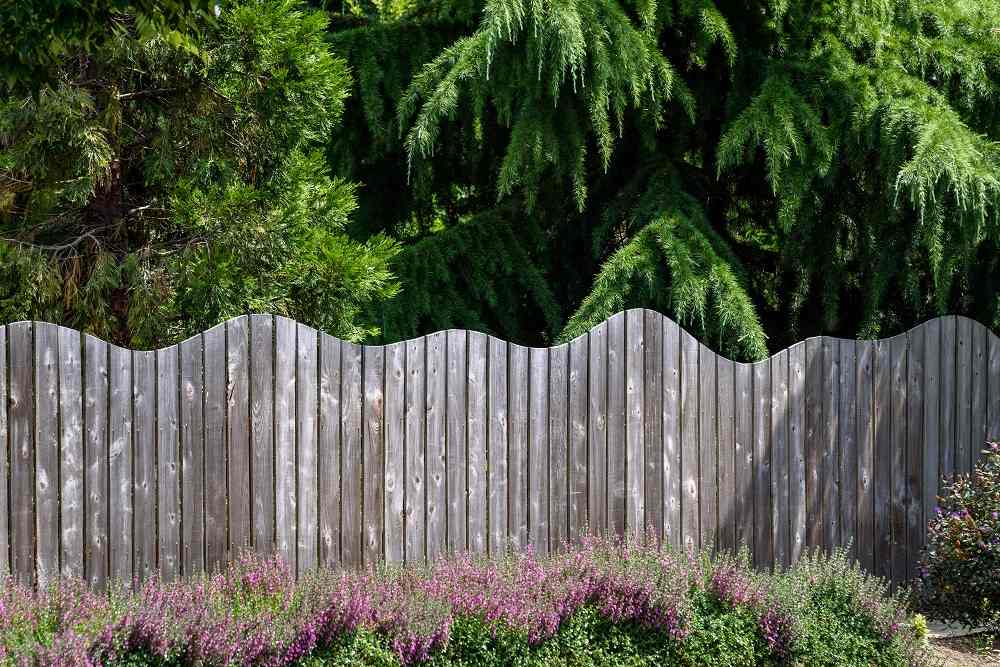
Reduce the chance that your cat will scale the fence by giving them no place to perch.
If you’re installing a new fence before bringing home your new cat, consider fencing with a curved top. Curved fencing is a great deterrent as it’s a bit scary for cats and not so easy for them to jump up and land on or walk along. This will also keep other neighboring cats out of your garden.
7. Create Overhangs

Plant overhangs are attractive and work well at blocking cats from getting over the top of a fence.
Anything that hangs over the top edge of your fence will deter your cat from jumping up to try and get over. This is because they know that there is no safe surface for them to land or walk on. Use pieces of fencing material to create an overhang, or make more of a decorative feature of it and use plant pots and trailing plants to make a more attractive-looking overhang.
8. Maintain The Fencing

Cats love being able to express their outdoor instincts such as hunting and climbing.
Keeping your fencing in good condition will prevent rot or damage that could create holes big enough for your cat to escape through. Wood should be treated with a pet-safe product, and holes in wire fencing should be repaired.
Always remove any loose splinters or wires from the fence, and ensure no nails are sticking out that could cause your cat an injury if they attempt to climb the fence. Proper maintenance will also ensure your cat-proof fence lasts for a long time before it needs repairs or replacement.
9. Build A Catio

Catios are the perfect compromise for letting your cat safely enjoy the outdoors.
The safest thing you can do to ensure your precious cat is safe in the garden is to install a purpose-built cat enclosure known as a ‘catio.’ With a catio, your cat can enjoy their time outside while you have full peace of mind that they are safe. There are no issues with planning permission to do this, but you will need to make sure it’s weatherproof and large enough for your cat to run and climb in.
You can either provide access by a cat flap or window or create enclosed sheltered areas within the enclosure. Usually, these enclosures are built using wire mesh fencing and may have a PVC roof or a mesh roof. Mesh needs to be one inch or less to ensure your cat cannot fit their head through, and it will need to be built using strong and stable supports.
Also Read: 8 Steps To Bringing An Outdoor Cat Inside
10. Purchase Specifically Designed Cat Fencing To Build

Outdoor stimulation is healthy and enriching for cats.
If you want a very cat-specific solution to your fencing problem, then there are some specialist fences available that are designed for catproofing your garden. There are even companies that will come to your home and discuss the different options and build you the perfect catproof fence.
Final Thoughts
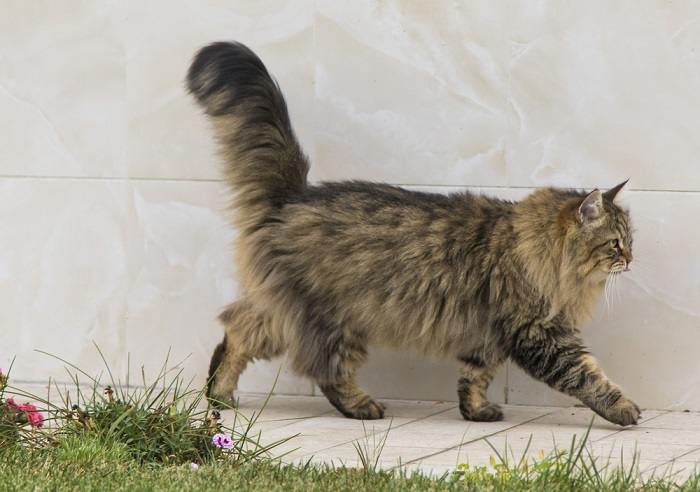
Exploring is a natural part of being a cat, making a safe area outside stimulating and enjoyable for them.
Cats love to explore the outdoors. It is healthy for them to have access to a safe outdoor space where they can display their natural behaviors such as hunting and climbing. But letting your precious cat explore outdoors can also be a huge worry, especially if you live in a busy area or close to a road.
Catproofing your fence is the best way to ensure that your cats stay safely in your garden. six-foot fence or a fence built up to six feet with a topper or other adaptations will prevent them from climbing up and out. You can even build a secure catio to give you total peace of mind.
Also Read: How To Safely Keep Cats Out Of A Room
Frequently Asked Questions
What height should a catproof fence be?
A fence needs to be at least 6 feet tall in order to keep your cat from climbing it, as this is too high for them to access easily.
What material can I use to catproof my fence?
Most fencing materials are suitable for catproofing your fence, including wooden panels, vinyl, wire mesh, and chicken wire. The gaps in the mesh and chicken wire must be no more than one inch to prevent your cat from getting their head stuck.
What is a catio?
A catio is a completely enclosed and safe outdoor space that is purpose-built to allow your cat to safely explore the outdoors. It should be weatherproof, provide shelter, and be a suitable size.
-
https://icatcare.org/advice/fencing-in-your-garden/
-
https://www.purrfectfence.com/blogs/news/cat-proof-fence-guide-different-options-effectiveness-ideas





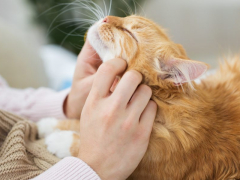


I once took my cat outside in the backyard with a harness. He pulled and I dropped the leash. He ran like a rocket and scaled the 6 foot wood fence in seconds. Luckily I was able to grab him off of the top of the fence before he jumped down on the other side.
Ohhhh, you’ve got such great pointers…….thank you much!!!!